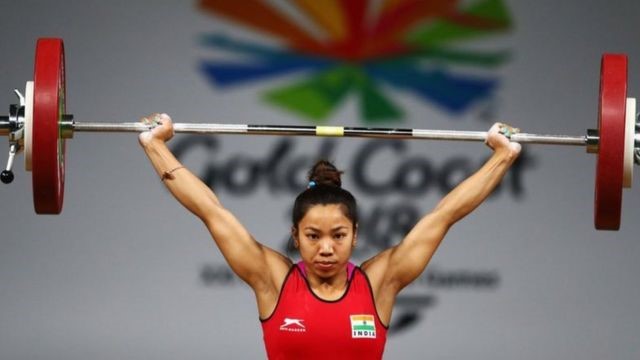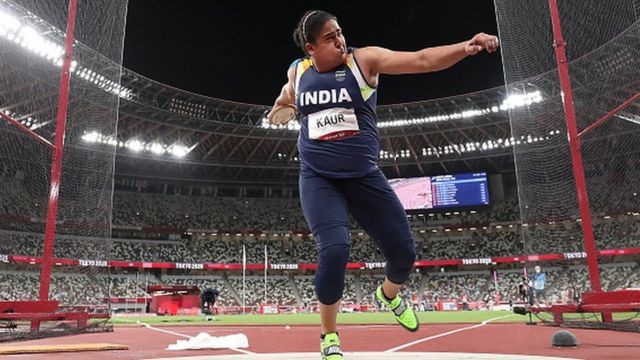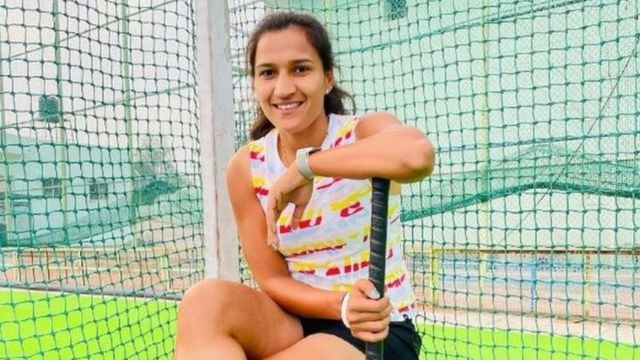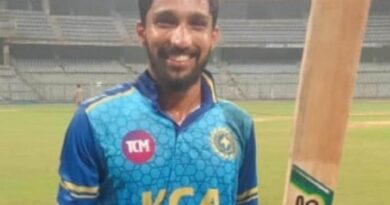Won medals, won hearts too, but will the mindset of people change?
Rani Rampal
“The girl will play hockey in shorts and T-shirt, she will go out and do this. The society taunted us, explained to us.
Rampal, Queen Rampal’s father
“Where will you send your daughter out, what will you do if it becomes high and low? Alone outside, don’t know what she would be doing?” Kuldeep Singh, Kamalpreet’s father.
These were some of the words that the girls and their families had to get up from the ground to listen to the girls and their families who made their mark in the Tokyo Olympics.
Prime Minister Narendra Modi also called the women’s hockey team ‘lioness’ and encouraged the players. Women players, whether it is the women’s hockey team, Mira Chanu, PV Sindhu, Kamalpreet, Deepika Kumari – all dominated the media and got a lot of praise.
The Prime Minister has now invited the players to come to the Red Fort as a special guest on the occasion of 15th August.

Women’s hockey team
But was the same enthusiasm seen for women players even decades ago today? The support and encouragement that is being seen in the society today will continue even further? Will the beliefs and mindset imposed on women in the name of Indian culture change?
Harpreet Kaur Lamba, a sports journalist and former deputy sports editor of the newspaper Asian Age, has been covering sports for nearly two decades.
She told the BBC that earlier the sport was not taken as a profession and that the number of female players was also less. She was expected so much that if she would qualify, then it would be a big deal.

Karnam Malleswari Experience
Weightlifter and Olympic medalist Karnam Malleswari also agrees.
He mentioned an incident in a conversation with the BBC over the phone. She told, “I went to play the World Championship in Istanbul in 1994. At that time the same thinking was going on that China would take gold and others would take silver and bronze. But I got silver in this championship. Then the doping case of a Chinese player came to the fore and I got the gold, then only my friends started talking, see how lucky it is. That is, my ability was not being understood there.
Karnam Malleswari
Born in Srikakulam, Andhra Pradesh, Karnam Malleswari won a bronze medal in the women’s 69 kg weightlifting event held in Sydney in 2000 and became the first Indian woman player to win a medal.
Sharing another incident with the BBC, he said, “The championship was held in China in the year 1995 and I made a world record. When it came time to play the national anthem, there was no national anthem, so our team and I sang the national anthem ourselves. So you understand what the thinking was, that is, bringing sports and women’s medal was considered a distant thing, then how would the preparation to win?
It is not that women were not coming in the game. Before Karnam Malleswari, PT Usha had made her mark as a runner. She was popularly known as Udan Pari. Gold was in the hands of the Indian women’s hockey team in the 1982 Asian Games and the 2002 Commonwealth Games.

Mirabai Chanu
But journalist Harpreet tells that when the first female player used to come to the tournament, she used to come with a baggage which included the responsibility of the house, taking care of the child, thinking of not having a long career in the game, denying her despite the opportunity because she was away from the family. There was pressure to get married.
Recalling the old era of the women’s hockey team, she says that now she sees the difference between the players on the ground.
She says, “Earlier women hockey players used to wear long leggings. She used to speak less when talking, mostly she showed a lack of confidence. But today’s players are more fit, strong, confident, dress up style shows and sense of victory. There is also a big contribution of trainers who are also working on increasing their abilities like physical, mental and communication methods.

Lovlina Borgohain-PV Sindhu
In the new National Sports Policy in the year 2001, emphasis was laid on providing modern infrastructural facilities to the players, enhancing the skills of the coaches, increasing the efficiency of the National Sports Federation, besides increasing the participation of women in sports.
How was the atmosphere before?
In the year 2004, the National Commission for Youth also prepared a report on the participation of women in sports before and after 1947. According to this report, women participated in the Olympics for the first time in 1952. After this, the government also organized the National Sports Festival for Women in the year 1975 to increase the participation of women in sports. Although women came forward in the game, there were some flaws in this effort.
Sports analyst Norris Pritam admits that ‘we are witnessing the rise of players like Rani and Chanu in the playground, but do not know that there must have been more talented girls who have been left behind due to lack of opportunity. There can be many social and economic reasons behind this.
He also considers better training facilities and modern technology as the main reasons for increasing confidence in the players.
He narrates an incident, “Before a match, a female player asked me very hesitantly what was the specialty of my opponent. That is, earlier there were not so many tools that you could get complete information about your opponent, but now the players have become aware. They have smart phones, you can watch old matches, which can be a good basis for making your strategy.

Kamalpreet
She says that earlier there was also a problem of connectivity for having a coaching center and going there. Female or male players used to return home after playing and became unfit. They had to try from the beginning, but now there are better facilities. The question is what should be done next.
They say that girls are being encouraged a lot when medals come. The government is announcing the award of honor money to the players and this news is also appearing in the media. But when these announcements are implemented, there should be reporting because the announcers disappear.
They raise the question that today they are being called daughters of the country, why are they not being called players? This is only a minute of fame, but when the lionesses ask for their rights, the lions will leave the field. It will also have to be seen from the media who will leave cricket and cover their matches.
PN Vasanti, who works for women’s rights, says that ‘bringing medals in the Olympics is really an opportunity for girls to shine and give them respect. There is no doubt about this that future players and people will also be encouraged. But how long the memory of this will be alive in the minds of the people and how much the attitude of the society will change, it is difficult to say right now.?
She says, “Even today, a large section of the society prevents girls from participating in sports. Still his role is seen in the kitchen and bedroom. In such a situation, until we do not see women as equals, then there will be no change. The performance and victory of these girls will definitely become an inspiration, but it will take time to change the thinking and perception of the society.
Has nothing changed in all these years?
Harpreet says that ‘whenever I talked to these women hockey players, on the basis of that, I can say that even in the current team, a quarter of the girls were under pressure to marry, but they have broken those barriers.’
Rani Rampal’s father told the BBC, “Those who used to taunt us, now they have enrolled their children in hockey and say show them as Rani Rampal.”
He says, “Earlier, I refused Rani to play hockey because it was not possible for a working man like me to spend so much, but now I will say this, don’t stop the girls, they will definitely show something.”
Kamalpreet’s father Kuldeep says that Kamalpreet’s height and stature were strong, his maternal grandfather also used to play discus throw in fairs.
Kuldeep, a farmer by profession, says, “Kamalpreet’s mother did not want her to go to sports, people also used to talk about different things. But I am proud of my Kamalpreet.
He laughs on the phone and says, “Whenever Kamalpreet is traveling, her mother stays awake and sighs. Mother’s heart is afraid, but now she does not stop him.
Gurjit Kaur: Journey from a Punjab Village to India’s Drag Flickr
Satbir Kaur is a Boxing Coach. Coming from Sirsa district of Haryana, Satbir is also looking after the coach of senior Indian boxing team.
She believes that bringing medals of women players motivates the emerging players. When she started 20 years ago, people used to taunt that she goes out, girl, something will go wrong. Will hit back. But now she has opened a boxing coaching center in his own village in which more than 30 girls are learning boxing.
Sports experts believe that to strengthen the spirit of sports, one has to start by providing facilities in the school at the grassroots level and strengthen the infrastructural facilities as countries like America, Australia and China are doing.
The girl alone is showing the courage to break the social stereotypes and shackles to cross the threshold, but the fear is that if she does not get the facilities she deserves for the game, then this luster will go on fading and then it will disappear.




